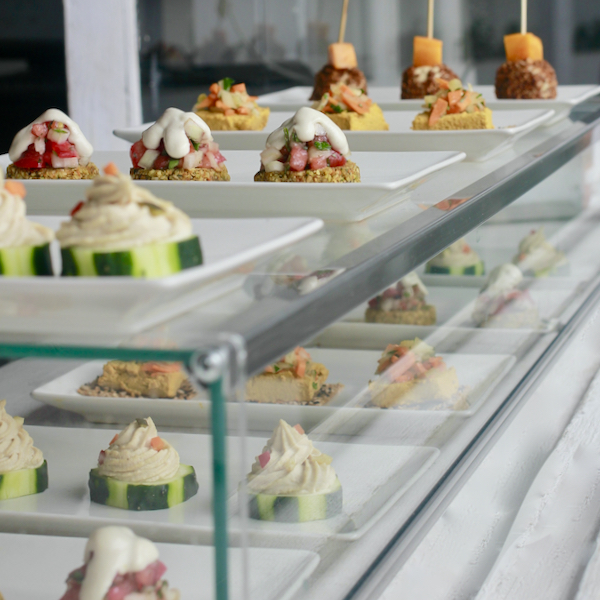Shopping guides
We recommend EWG‘s shopping guide to avoid pesticides in vegetables. Using EWG’s guide allows you to prioritize your shopping list for vegetables and buy conventional farming vegetables without pesticides. You can use the free Dirty Dozen and Clean Fifteen App to guide you through the most and least pesticide contaminated vegetables when shopping.
Understanding additives
the EWG guide to additives is a good tool to avoid unwanted chemical additions to your food.
Safe cookware
The nonstick coating used in DuPont’s Teflon® pans has been found to release one or more of 15 different toxic gases when heated to certain temperatures, but is generally safe when used according to manufacturers’ specifications. Which chemicals are released depends on the temperature of the pan.
Stainless Steel
Stainless steel is a terrific alternative to a non-stick cooking surface. Most chefs agree that stainless steel browns foods better than non-stick surfaces. In their 2001 review of sauté pans, Cooks Illustrated, an independent publication, chose a stainless steel pan over otherwise identical non-stick models. They also recommended stainless steel pan roasters over non-stick.
Cast Iron
Cast iron remains a great alternative to non-stick cooking surfaces. Lodge, America’s oldest family-owned cookware manufacturer, refers to their cookware as “natural non-stick.” Cast iron can be pre-heated to temperatures that will brown meat and will withstand oven temperatures well above what is considered safe for non-stick pans. Cast iron is extremely durable and can now be purchased pre-seasoned, ready-to-use.
Other Cooking Surfaces
A nonstick alternative to Teflon® is baked enamel cookware, or porcelain cookware. This cookware is inert at all temperatures, is dishwasher safe, and according to many professionals, cooks all types of food superbly.
SAFEST OPTIONS: Inert, non-reactive materials like ceramic, enamel-coated cast iron, glass or silicone
Ceramic: The healthiest ceramic cookware I’ve come across is the Xtrema brand, which is made by Ceramcor. They offer a full line of moderately priced cookware and bakeware made out of a unique ceramic material that is all natural, 100% non-toxic and completely non-leaching.
Ceramic is breakable, so you do need to exercise care when using it. The Xtrema products, however, are extremely durable — the cooking surface cannot be scratched, even by metal utensils and steel wool, and they can endure temperatures of up to 2,700 degrees F! Additionally, they come with a 50 year warranty that covers all thermal shock breakage.
Enamel-coated cast iron: Le Creuset makes high quality enamel coated cast iron. With proper care, good ceramic or enamel-coated cookware will last a lifetime. It is entirely non-leaching. The main drawbacks with this type of cookware are that it is expensive, requires thorough hand washing and is breakable.
Glass: Glass is inert and affordable, but highly breakable and does not conduct heat evenly. Glass containers are great for storing food, however.
Also read
5 Reasons to Avoid Storing in Plastic Containers
Silicone: Silicone is a synthetic rubber that is now being made into bakeware, spatulas, molds and more. It is the only non-reactive, synthetic non-stick material. It is considered safe up to 428 degrees F. When heated above its safe range, silicone melts, but doesn’t outgas toxic vapors. It also conducts heat less efficiently, therefore, using silicone may require you to increase cooking time.
GOOD OPTIONS: Moderately reactive materials such as stainless steel and cast iron
Stainless steel: Stainless steel is the least reactive metal, and many people consider it the most versatile and affordable healthy cookware option. However, research has shown that once stainless steel has been scratched, as a result of normal scrubbing, small amounts of nickel and chromium may begin to leach.
Cast iron: Cast iron is extremely durable and great to use for sautés, pancakes and quick breads. However, cooking liquids or acidic foods in cast iron can leach iron from the pot, which is undesirable in most cases. The other drawback of cast iron is that it requires special care.











Leave a Reply